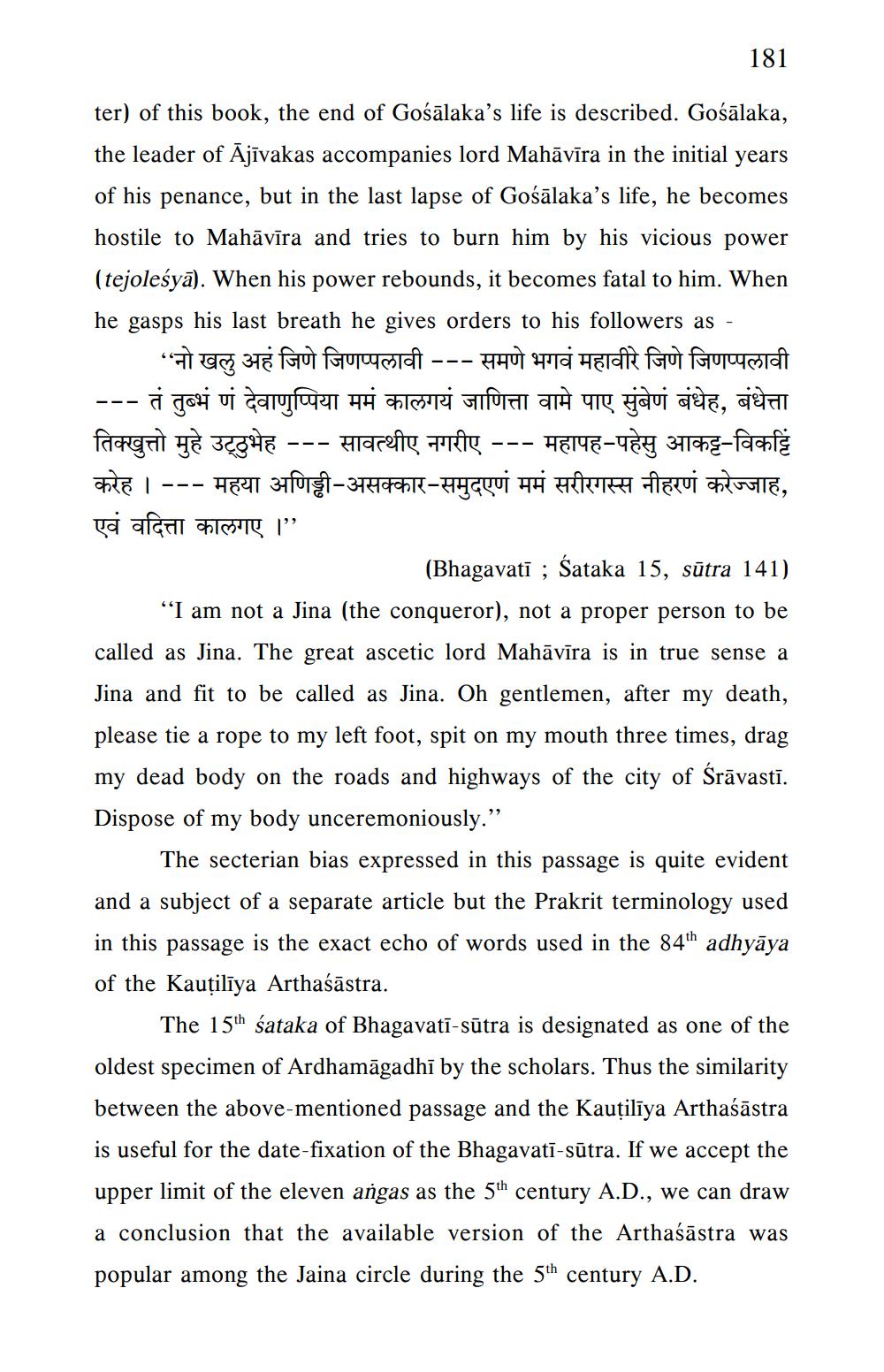________________
ter) of this book, the end of Gośālaka's life is described. Gośālaka, the leader of Ajivakas accompanies lord Mahāvīra in the initial years of his penance, but in the last lapse of Gośālaka's life, he becomes hostile to Mahāvīra and tries to burn him by his vicious power (tejoleśya). When his power rebounds, it becomes fatal to him. When he gasps his last breath he gives orders to his followers as
“नो खलु अहं जिणे जिणप्पलावी
- समणे भगवं महावीरे जिणे जिणप्पलावी
तं तुब्भं णं देवाणुप्पिया ममं कालगयं जाणित्ता वामे पाए सुंबेणं बंधेह, बंधेत्ता
महापह-पहेसु आकट्ट-विकट्टिं महया अणिड्ढी-असक्कार - समुदएणं ममं सरीरगस्स नीहरणं करेज्जाह,
fargal yè 3¿ghë
करेह । एवं वदित्ता कालगए ।”
———
➖➖➖
———
• सावत्थीए नगरी
181
———
(Bhagavati; Śataka 15, sūtra 141)
"I am not a Jina (the conqueror), not a proper person to be called as Jina. The great ascetic lord Mahāvīra is in true sense a Jina and fit to be called as Jina. Oh gentlemen, after my death, please tie a rope to my left foot, spit on my mouth three times, drag my dead body on the roads and highways of the city of Śrāvasti. Dispose of my body unceremoniously."
The secterian bias expressed in this passage is quite evident and a subject of a separate article but the Prakrit terminology used in this passage is the exact echo of words used in the 84th adhyāya of the Kauṭiliya Arthaśāstra.
The 15th śataka of Bhagavati-sūtra is designated as one of the oldest specimen of Ardhamāgadhi by the scholars. Thus the similarity between the above-mentioned passage and the Kauṭiliya Arthaśāstra is useful for the date-fixation of the Bhagavati-sūtra. If we accept the upper limit of the eleven angas as the 5th century A.D., we can draw a conclusion that the available version of the Arthaśāstra was popular among the Jaina circle during the 5th century A.D.




